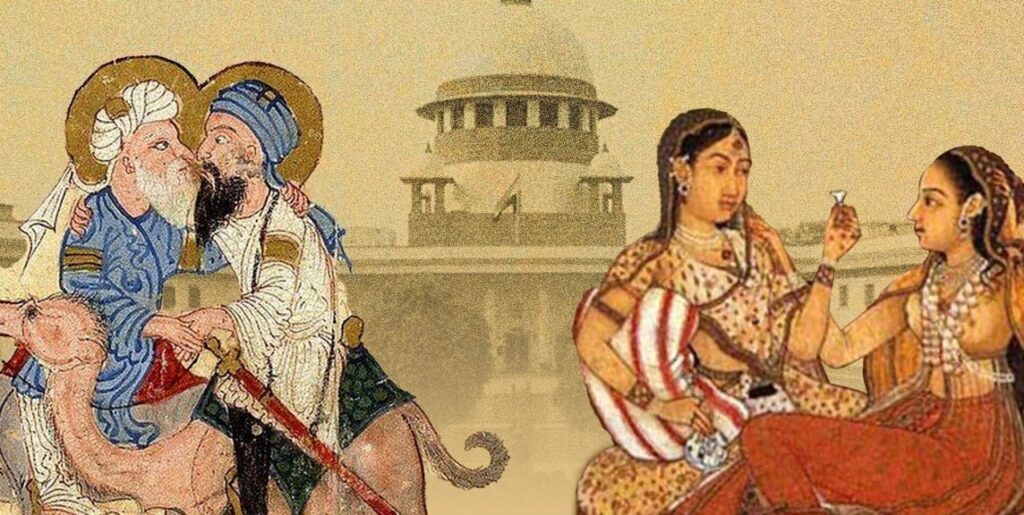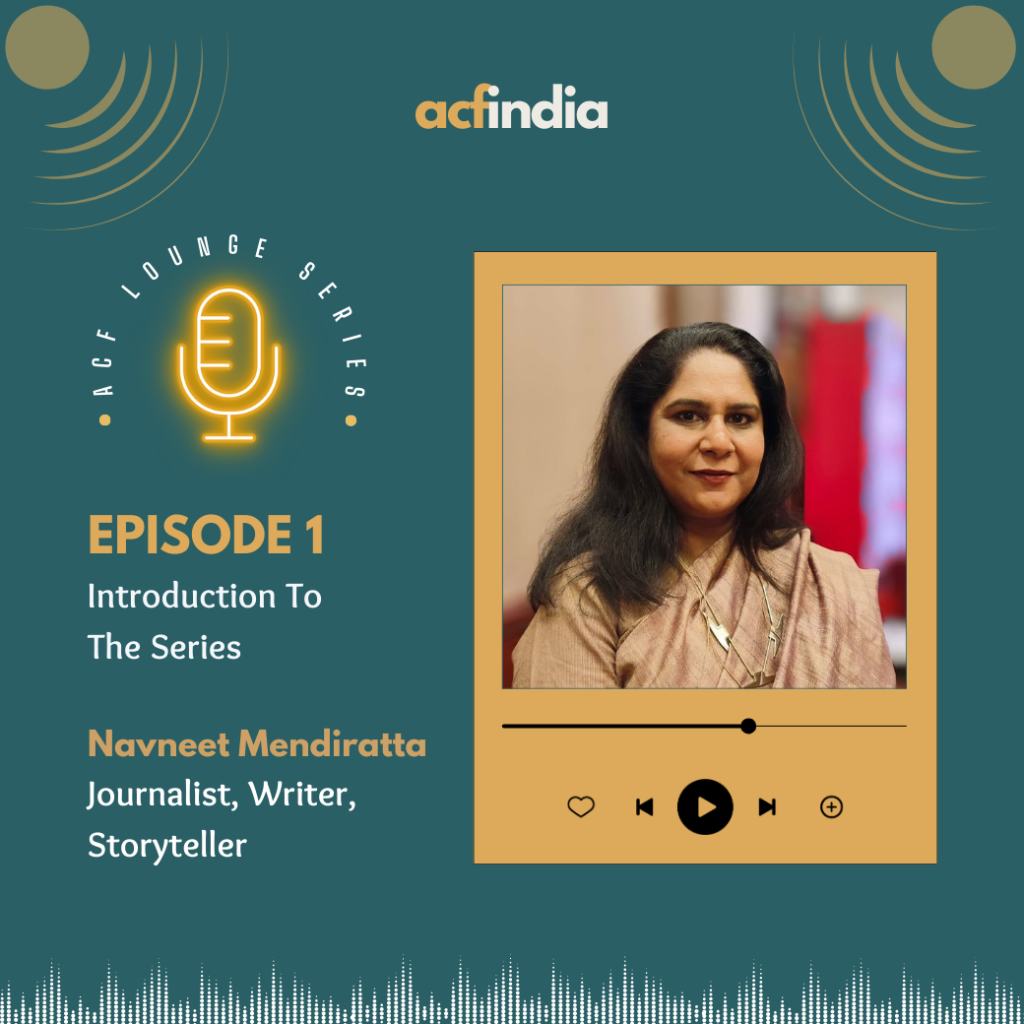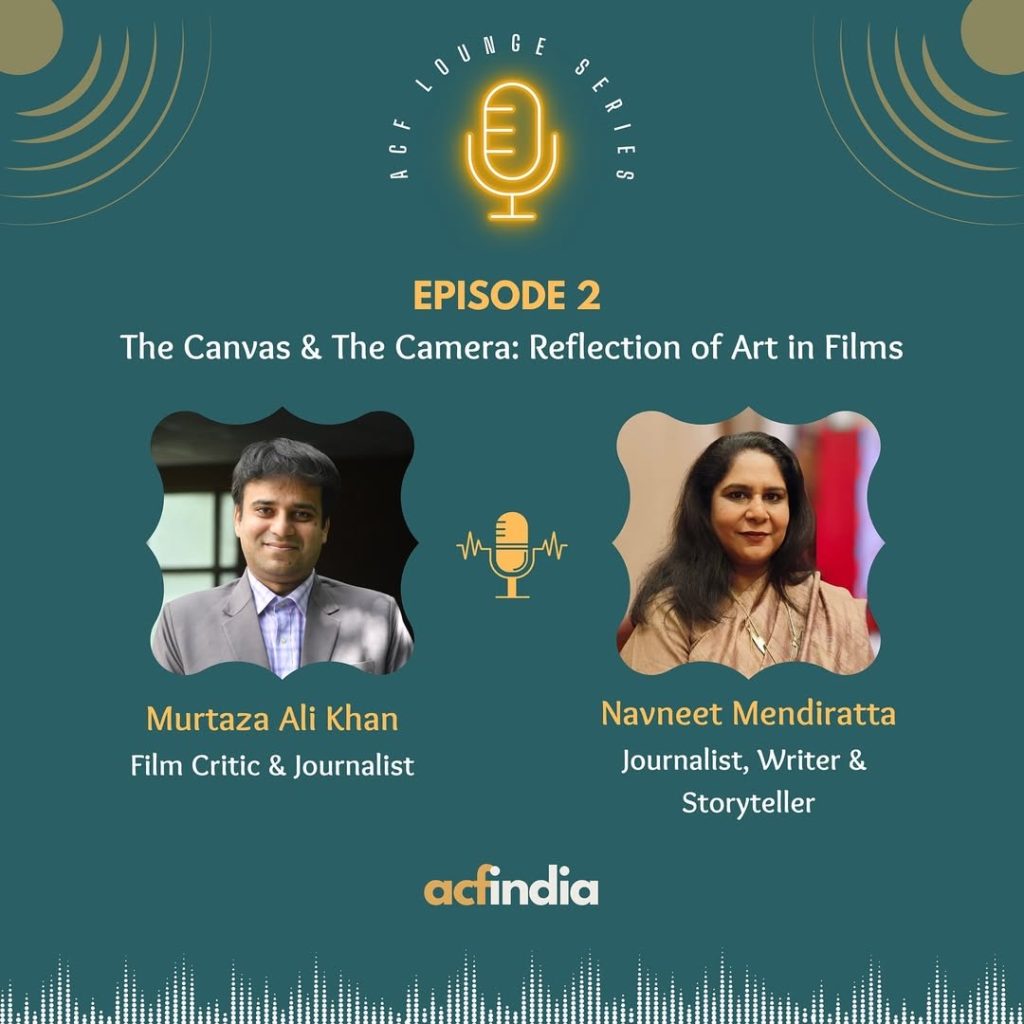By- Chahat Sharma
June is Pride Month, a time to celebrate diversity, honour the LGBTQIA+ community, and amplify voices and stories that have long been silenced or overlooked. While much of the modern conversation around queer rights in India focuses on recent legal and social milestones, the truth is that gender fluidity, same-sex love, and non-binary identities have existed in Indian culture for centuries. They have always had a place in our stories, scriptures, history, and spiritual imagination.
In honour of Pride Month, this article explored how Indian mythology offers powerful evidence that queerness is not a Western philosophy but, in fact, something that is deeply rooted in the subcontinent’s ancient traditions. These stories reflect a time when diverse identities were not just accepted, but they were revered.
Ardhanarishvara: The Sacred Balance of Gender
Ardhanarishvara is one of the most iconic depictions of gender fluidity in Indian mythology. The combined form of Shiva and Parvati is depicted as a union of half-male and half-female. This form is not seen as an abnormality but as the perfect union of opposites. This form symbolises the essential oneness of all gender expressions. Ardhanarishvara challenges binary norms and reminds us that gender, like the cosmos, is fluid and whole.
Image Courtesy: The MET
Kramrisch, Stella. The Presence of Śiva. Princeton University Press, 1981, pp. 319–328.
Agni, Mitra and Varuna: Queer Affection Found in Oldest Sacred Text
The Rigveda, one of the world’s oldest sacred texts, contains hymns reflecting deep emotional and spiritual bonds between deities. Agni, the god of fire, is often depicted as having both a wife and a husband. Although married to goddess Svaha, he also has same-sex relations with Soma, the moon god.In the Vedic literature, Mitra and Varuna are often portrayed as gods of deep intimacy and cosmic balance. Their bond is symbolic of profound male companionship; they are often depicted riding together on a golden chariot or a crocodile. Texts describe their union during lunar phases, symbolizing same-sex affection. The Bhagavata Purana mentions that they fathered children together through ayoni (non-vaginal) means. This mirrors modern queer parenthood and surrogacy.
Doniger, Wendy. The Rig Veda: An Anthology. Penguin Classics, 1981, Hymns 1.93, 5.63, and 7.61
Agni Collecting Vital Fluids from Lord Shiva
Image Credits: Bhubaneswar Museum
Mohini and Vishnu: Divine Gender FluidityThe only female avatar of Vishnu. The story of Mohini embodies gender transformation with grace and power. Mohini was pivotal in helping the gods regain the nectar of immortality. In another story, Shiva gets so mesmerized by Mohini that their union gives birth to Ayyappa, a god worshipped widely across South India. These tales portray gender fluidity not only as divine but also as necessary for cosmic balance.
Jamison, Stephanie W., and Joel P. Brereton. The Rigveda: The Earliest Religious Poetry of India. Oxford University Press, 2014.
Bhagavata Purana, Book 8, Chapters 8–9.Bhagavata Purana, Book 8, Chapters 8–9.
Doniger, Wendy. The Origins of Evil in Hindu Mythology. University of California Press, 1980.
Image Courtesy: National Museum, New Delhi
Ayyappa: Born of Queer DivinityThe product of the divine union between Vishnu (as Mohini) and Shiva, he is also known as Hariharaputra or “the son of Vishnu and Shiva.” He is worshipped as a powerful deity in Kerala. The story of his birth involves two male gods, one in a female form, further reinforcing the sacredness of queer unions. His birth is not condemned, but celebrated.
Ayyappa Idol at Mridngasaileswari Temple
Freeman, Rich. “The God Who Was a Woman.” Journal of Ritual Studies, vol. 15, no. 2, 2001, pp. 15–36.
Aravan: Symbol of India’s Third Gender Spiritual Inclusion
Aravan, the son of Arjuna, agreed to be sacrificed before the Mahabharata war but wished to marry before his death. To fulfil his last wish, Krushna transformed into Mohini and married Aravan for one night, and mourned him the next day. This myth is honoured at the Koovagam festival in Tamil Nadu, where the transgender and hijra community re-enacts this divine union. It is one of the most powerful symbols of recognition and spiritual inclusion for India’s third gender.
Aravan’s Head
Image Courtesy: Asian Civilizations Museum, Singapore
Shikhandi: Gender Transition with Purpose
Originally born as ‘Shikandini’ to King Draupad of Panchala, later transformed into a man. They play a crucial role in the fall of Bhishma during the Kurukshetra war of the Mahabharata. This transition is accepted and even encouraged by divine forces. Rather than being marginalised, Shikhandi becomes a central figure in the war narrative, asserting that one’s gender identity need not hinder their destiny.
Nanda, Serena. Neither Man Nor Woman: The Hijras of India. Wadsworth Publishing, 1999.
Shikhandi fights Kripa
Ila: A Life Between GenderA person who alternated between male and female forms due to a curse and blessing. The story of Ila highlights the theme of dual gender identity. As a woman, Ila marries Budha (Mercury), and as a man, he fathers children. The narrative does not judge or ridicule; in fact, it portrays fluid gender identities as part of life’s divine mystery.
Doniger, Wendy. Women, Androgynes, and Other Mythical Beasts. University of Chicago Press, 1980.
Doniger, Wendy, and Brian K. Smith. The Laws of Manu. Penguin Books, 1991, commentary on gender.
King Ila with Budha
Image Courtesy: Gita Press
Arjuna as Brihannala: Gender Acceptance
Mahabharata mentions that during their exile, the third Pandu son, Arjuna, disguises himself as Brihannala, a transgender dance teacher for the princess of Matsya, Uttara. His feminine persona does not reduce his masculinity or warrior prowess. Rather, it showcases his adaptability and humility. The narrative normalises temporary gender non-conformity and celebrates it as a form of strength.
Hiltebeitel, Alf. The Cult of Draupadi. University of Chicago Press, 1991.
Arjuna in Virata Sabha by Nandalal Bose
Image Courtesy: V&A Museum
Bahuchara Mata: The Patron Goddess of Hijras
Worshipped in Gujarat and Rajasthan, she is a goddess closely associated with the hijra community. Her origin myths involve themes of celibacy, gender change, and spiritual empowerment. For many transgender devotees, she represents divine validation and societal acceptance.
Reddy, Gayatri. With Respect to Sex: Negotiating Hijra Identity in South India. University of Chicago Press, 2005.
Image Courtesy: Peter Blohm
Samba: Patron of Eunuchs
The son of Krishna Samba was born from a boon granted by a female ascetic. Later, he is cursed to bear a child, thus blurring the lines between male and female roles. The story reinforces the idea that divine justice and transformation do not adhere strictly to gender binaries.
Goldman, Robert. The Ramayana of Valmiki: An Epic of Ancient India, Volume V. Princeton University Press, 2009.
Samba dressed as a pregnant woman
Image Courtesy: Old Indian Arts
Lopamudra: Redefining Womanhood
While not queer in a traditional sense, Lopamudra is the wife of sage Agastya. According to the Giridhara Ramayana, sage Agastya seeks to marry a princess of Kanyakubja, but the king, having no daughters left, disguises his son Lopamudra as a girl to avoid Agastya’s wrath. Upon marriage, a miracle transforms Lopamudra into a woman. This tale reflects early Indian narratives acknowledging gender transformation
Ganesha: Female-Only BirthIn the 13th century Kashmiri text Haracaritacintamani by Jayadratha, Ganesha is born when Parvati’s menstrual blood flows into the Ganges and is swallowed by her elephant-headed female attendant Malini, who then gives birth to Ganesha. This version of Ganesha’s origin highlights feminine creative power and fluid origins. The story resonates with today’s efforts to reframe gender and biological narratives beyond ‘normalised’ norms.
Sharma, Arvind. “Reconsidering the Role of Women in the Vedas.” Journal of the American Academy of Religion, vol. 44, no. 1, 1976, pp. 1–17.
Referenced in: Flood, Gavin. The Hindu Tradition: Theological and Philosophical Perspectives. Routledge, 2003.
Image Courtesy: The MET
Queer Devotees of Rama
Folklores and oral traditions speak of queer and transgender devotees of Rama who were blessed for their loyalty. When the deity Lord Rama was banished from his kingdom, his followers followed him to the forest. He requests all the “men and women” to return. All except the transgendered individuals stayed back with Lord Rama. Lord Rama was greatly moved by their loyalty and love. He bestowed upon them the power to confer blessings on auspicious occasions.
Reddy, Gayatri. With Respect to Sex: Negotiating Hijra Identity in South India, Chapter 1.
Image Courtesy: Media India Group
As we celebrate Pride Month, revisiting these stories becomes an act of reclamation. Queerness in Indian heritage is not an exception but part of the norm. These narratives offer validation, strength, and sacredness to identities that are still fighting for dignity in today’s society.
These narratives also serve as a reminder that India’s roots are not as conservative as often portrayed. They are rich, layered, and inclusive. The ancient narratives reflect a world that understood gender and sexuality as diverse and fluid qualities that are not just accepted but also divinised.
Bibliography
• Vishnu Purana. Translations by H. H. Wilson and others; multiple editions.
• Doniger, Wendy. The Origins of Evil in Hindu Mythology. University of California Press, 1980.
• Doniger, Wendy. Women, Androgynes, and Other Mythical Beasts. University of Chicago Press, 1980.
• Doniger, Wendy. The Rig Veda: An Anthology. Penguin Classics, 1981.
• Doniger, Wendy, and Brian K. Smith. The Laws of Manu. Penguin Books, 1991.
• Flood, Gavin. The Hindu Tradition: Theological and Philosophical Perspectives. Routledge, 2003.
• Freeman, Rich. “The God Who Was a Woman.” Journal of Ritual Studies, vol. 15, no. 2, 2001, pp. 15–36.
• Goldman, Robert P. The Ramayana of Valmiki: An Epic of Ancient India, Volume V: Sundarakanda. Princeton University Press, 2009.
• Hiltebeitel, Alf. The Cult of Draupadi. University of Chicago Press, 1991.
• Jamison, Stephanie W., and Joel P. Brereton. The Rigveda: The Earliest Religious Poetry of India. Oxford University Press, 2014.
• Jayadratha. Haracaritacintamani (13th century). Referenced in: Gavin Flood, The Hindu Tradition: Theological and Philosophical Perspectives. Routledge, 2003.
• Kramrisch, Stella. The Presence of Śiva. Princeton University Press, 1981.
• Nanda, Serena. Neither Man Nor Woman: The Hijras of India. Wadsworth Publishing, 1999.
• Reddy, Gayatri. With Respect to Sex: Negotiating Hijra Identity in South India. University of Chicago Press, 2005.
• Sharma, Arvind. “Reconsidering the Role of Women in the Vedas.” Journal of the American Academy of Religion, vol. 44, no. 1, 1976, pp. 1–17.
• Bhagavata Purana. Translated excerpts and commentary in various editions including the Motilal Banarsidass and Gita Press translations.
• Mahabharata. Critical Edition, Bhandarkar Oriental Research Institute; English translation by Kisari Mohan Ganguli (1883–1896), available in the public domain.












